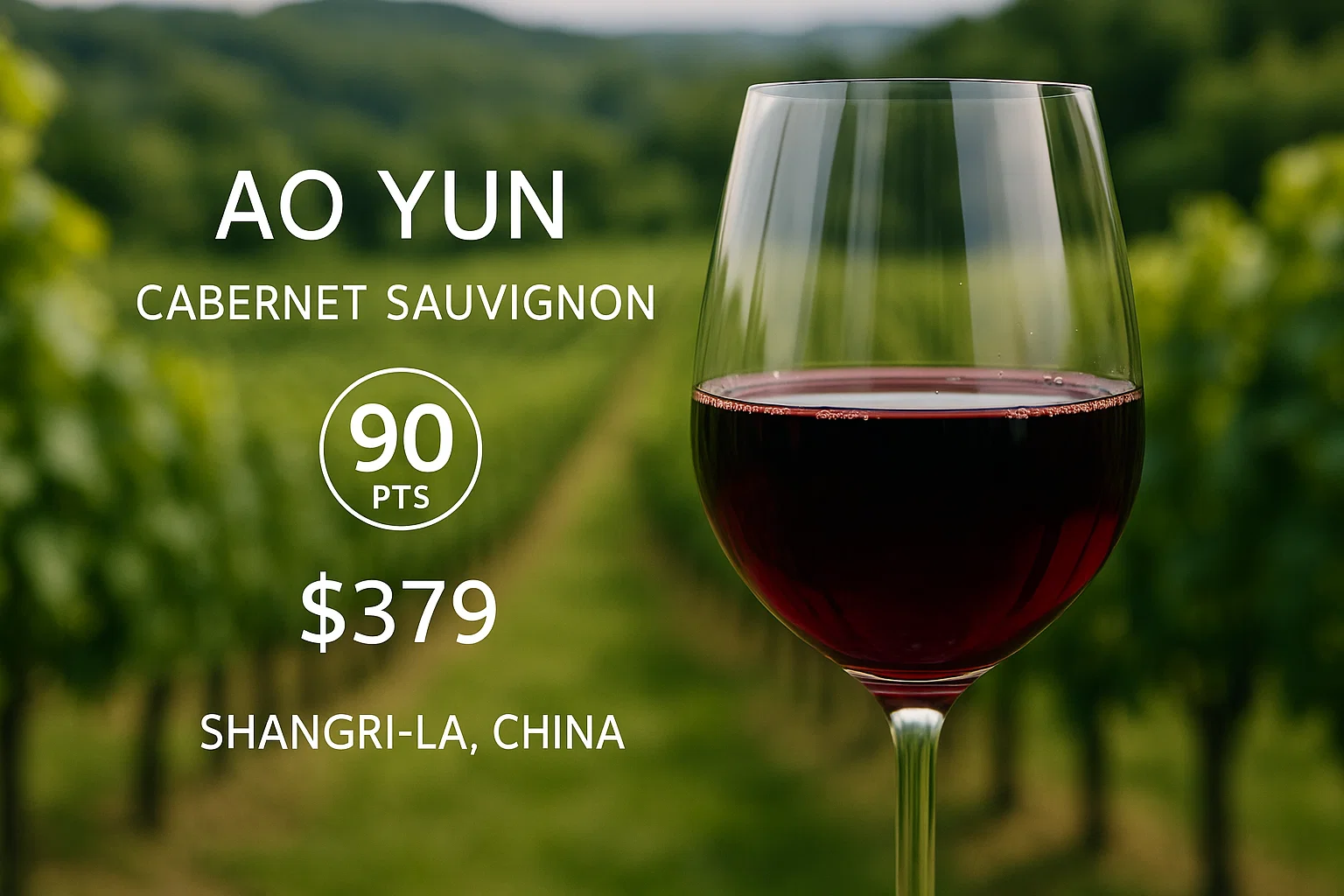
Our Rating

Shangri-La, Yunnan
Cabernet Sauvignon
Launched by Moët Hennessy, Ao Yun debuted with 2013 and followed swiftly with its second release, 2014. The estate sits in the UNESCO Three Parallel Rivers area, working steep terraces above the Mekong with climate and light patterns unlike classic lowland sites. The goal is a Bordeaux-leaning Cabernet that reads unmistakably as mountain wine. (MH Wine Estates, Aoyun Wine)
Ao Yun’s vineyards are split across four villages—Adong, Xidang, Sinong, Shuori—ranging from ~2,200 to 2,600 m. The team farms and ferments by plot to keep each site’s character intact, building the final blend from many micro-lots. Public materials consistently reference ~314 parcels over ~28 ha, underscoring the project’s “many parts, one wine” philosophy. (Aoyun Wine, JamesSuckling.com)
Altitude lowers average temperatures and lengthens ripening, while intense UV exposure at 2,200–2,600 m thickens skins and can contribute to silkier, more complex tannins. The villages straddle two banks of the Mekong with differing aspects and soils, offering a palette of structure (Sinong), concentration (Adong), and rounding elements (Shuori), with Xidang typically more approachable. This terroir set helps explain the wine’s combination of power, freshness, and savory detail. (Aoyun Wine)
High altitude means ~25% less oxygen; Ao Yun adapts by increasing aeration during maceration, prolonging extractions by plot/vintage, conducting malolactic in new barrels and oxygen-permeable earthen jars, and using less SO₂ than typical. Grapes are hand-harvested and vinified parcel-wise, with a reported ~14 months of élevage for the wine. For 2014, the harvest ran Sept 14 – Oct 21, reflecting a warmer/drier season and an earlier, smaller crop than 2013. These choices and conditions aim for concentration with freshness rather than heaviness. (Aoyun Wine, Wine-Searcher)
Estate notes and retailer summaries describe 2014 as warmer and drier than average, delivering an early harvest and a smaller crop than 2013. Ao Yun positions the 2014 as more precise and complex than the inaugural vintage, with all four villages contributing strongly. Commonly published drink windows run roughly 2017–2028, in line with the wine’s structure and tannin profile. (Aoyun Wine, lagunacellar.com, Wine-Searcher)
Appearance. Deep garnet with a dense core and pronounced viscosity, consistent with a full-bodied profile. Clarity is high, suggesting careful settling and élevage.
Aromas. Pronounced black cherry, cassis, blackberry, and blueberry are laced with bell pepper and black pepper, over tobacco, licorice, and vanilla/oak accents. The alcohol impression is high but integrated.
Palate. Dry and powerful with medium acidity and high, fine-grained tannins. Black cherry, cassis, blackberry, and blueberry lead, joined by bell pepper, pepper spice, licorice, mint, violet, leather, and measured oak.
Finish. Long and steady, the dark-fruit core tapering to mineral and herbal echoes that underline the altitude signature.
A frontier wine with classic bearings, Ao Yun 2014 marries mountain freshness to Cabernet’s dark core and carries it with polished intent. The impression is concentrated but not ponderous, shaped by fine tannins and a cool, savory undertow. It reads serious today and has the frame to reward cellaring through the back half of its window.
China
Shangri-La, Yunnan
Cabernet Sauvignon
15
Maxence Dulou
90 Minutes
Now to 2040
Ao Yun

All things wine, and food you could ever need or want — straight to your email!